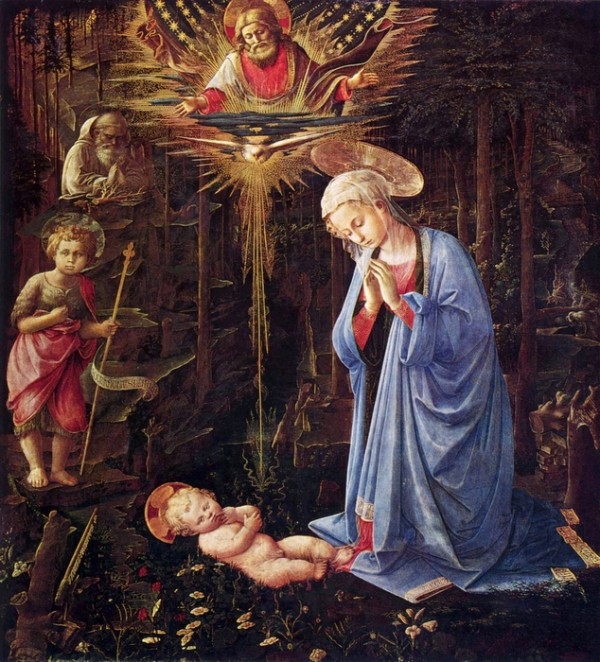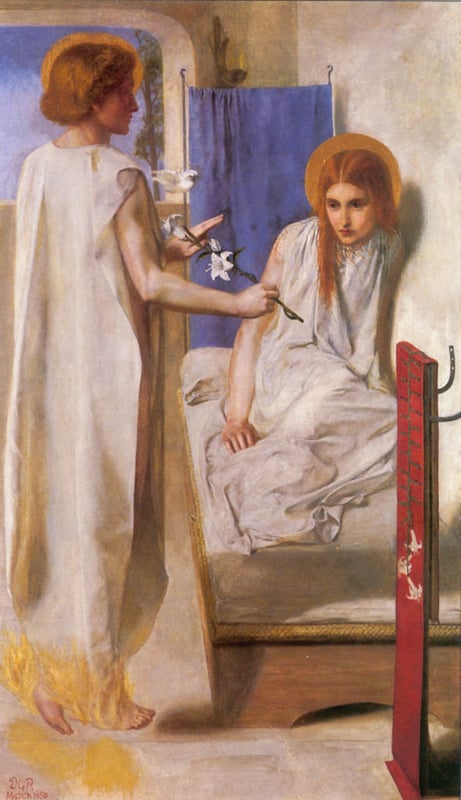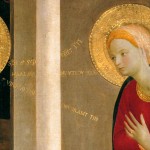 What would the Trinity be without Mary?
What would the Trinity be without Mary?
The oldest Christian traditions in the world don’t even try to separate them. Catholics. The Orthodox: Russian, Greek, Serbian, Ethiopian, Armenian, Coptic, the beleaguered Syrian, and probably a dozen more varieties. In all of these, and they are the majority of Christians, Mary is the Trinity’s partner. Mary is the Trinity’s Plus One.
The Protestant world, mainline and evangelical, and the Pentecostal world, have produced mind-numbing tomes on the nature of the Trinity without any mention of Mary, and without much reverential effect.
Most Protestants take God, Jesus, and the Spirit separately, in their discernment and in their prayer. The power and the point of Trinitarian relationship is not something anyone retells in personal experiences. Or even thinks about, despite endless Sunday recitations of the Glory Be’s.
But in the Catholic and Orthodox world, there is a wholeness that is never separated: the Trinity Plus Mary.
In Mary, the Trinity is evident, experienced, remembered and desired. And this plays out in every story we have about her. Who but she could possibly be the source of these stories?
The Annunciation: she receives the message that God has chosen her for the fullness of her grace; and the Spirit descends upon her, and she conceives the Child Jesus.
At the Child’s Birth, where she is protectively hidden in a stable, the glory of God reveals her and her child to the shepherds, and the Spirit guides the Magi to them.
When Jesus is twelve and Mary finds he is missing, she and Joseph discover him in the Great Temple – the actual House of God in Jerusalem – where the Rabbis are awed by the palpable presence of the Spirit in him.
At Cana, where the Presence of God is invoked over a marriage, she prods him to invoke the Spirit as well, changing water to wine.
Later, in fear for his life she comes with his brothers to stop his preaching and take him home. But he rebuffs her by invoking the Spirit over all who are listening to him, declaring them his family, making all of them children of his Belovedness, which God has declared over him.
In all of these events, the Presence of God has hallowed a moment in which the Spirit creates something new that is in and of Jesus. And Mary is the catalytic, the change agent who participates in all that is happening.
Only she would have known all these details, only she could have told these stories. They happened to her in private, or were recounted after Jesus’ death, when Joseph is no longer with her.
And importantly: they are not the stories of a beaming and proud mother. Her presence in them is neither beaming nor proud. She is skeptical and suspicious at the Annunciation. Worried and exhausted at the birth. Frantic and scolding at the Temple. Argumentative and insistent at Cana. Fearful and sharp at his public meeting. These are not stories proud mothers tell.
So this is the work of Mary, after Jesus: to tell stories that bring the uniquely special work of Trinity into human focus, displaying the force field that has been at work in creation and is at work now in all people, and she was the first into which the Spirit entered, at God’s behest.
Theologian Mary Luti has recently quoted the late Harvard Chaplain, Peter Gomes: we aren’t here to own anything, but to receive everything; not to finish anything, but to participate in something. And if it seems unfair not to see the fruits of our labor, it is likewise an undeserved privilege that we get to labor at all. This could be Mary’s personal credo. It could also be the best-ever description of the Trinity.
Trinity is not a flag to be saluted. Nor is it an altar object to be worshipped. Nor, in fact, is Trinity a power multiplier. In Trinity there is an energy that allows possibility to enter impossible situations, a strangeness that hallows the familiar, a love that binds people to the purposes of God.
After Jesus, it is written that Mary lived with the community of John, from which, in about the year 100, the Gospel of John emerged. Her presence among them is mentioned a few times, but that is all. None of her stories, save Cana, are written in this gospel.
Yet it would make much sense that she was sought out by many who wanted to hear her stories of Jesus, and who did write them down, and they eventually came to us through Matthew and Luke.
It also makes sense that her own emphasis on the interwoven signs and wonders of God, the Spirit and her son would have helped to shape her community’s theology into a gospel of signs and wonders.
Whatever sense we may want to make of the Trinity, leaving her out of the story muddles it up. Trinity meets, makes flesh, and works as One, in her.
_______________________________________________________________________________________________
Image: Adoration of the Child, Fra Filippo Lippi, 1459, Berlin, Germany. Vanderbilt Divinity School Library, Art in the Christian Tradition.










